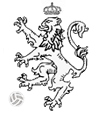
Document | arfsh.com
A document created by arfsh.com for the whole football community
The Free Critic #10
Author: Isaque Argolo | Creation Date: 2022-09-11 21:27:31
Data providers: Isaque Argolo.
Archive(s): .
This is a text that I had wanted to write for a long time, precisely after having read the two editions of György Hlavay himself, in which he, in 1929, comments on the best Hungarian XI of all time. In the second edition, Hlavay mentions the best offensive lines according to his own opinion. However, I don't believe the comparison was fair enough to make. The offensive line Winkler — Konrád II. — Schlosser — Schaffer — Szabó is not the best offensive line Aranycsapat has ever put in a match. Hlavay's mention of this offensive line is completely erroneous. After all, there were two lines in which MTK, during their continental reign, performed better and with more regularity. First, it is good to mention the following line — the most well-known:Szabó Schaffer BraunSchlosser Konrád II.The offensive line above is featured the most For sure, this is a better combination than what Hlavay commented on, not only because it was the most frequent, but in addition to performing much better than with Imre Schlosser as centre-forward and Alfréd Schaffer as inside left. SCHLOSSER & SCHAFFER Compared to the formation mentioned by Hlavay, it has Schaffer as centre-forward and Schlosser in his original position, as inside left. Furthermore, the formation mentioned by Hlavay was hardly used during the peak of MTK. Although he was much more of an insider, Schlosser played a few times as a centre-forward, but he was unable to play anything like that time when he used to be an inside left, in the same way that he played a few times as a left winger and never managed to stand out. Consequently, Slózi is much better fitted as an inside left in this formation. On the other hand, Schaffer could very well act as an insider, both on the right and on the left side — left side, mainly — and as a centre-forward, which was the very position in which he gained fame across the continent. In his article, Hlavay also comments that Schlosser, as inside left, working alongside centre-forward György Orth, reached a second peak in his career, something similar to what he had reached in terms of performances for Ferencváros. However, Schlosser himself in an interview has already claimed that he and Orth never got along very well, as Gyuri was of the combination style. Furthermore, Schlosser had always mentioned that he preferred a breakthrough style centre-forward at his side — and that's exactly how Schaffer played while wearing the MTK colors. THE KONRÁD II. FACTOR Schaffer, Konrad II. and Schlosser had different styles. Due to several different characteristics, some united Schlosser and Schaffer — the ability to shoot, in addition to being the executors. Kálmán Konrád, in turn, was a player more focused on creation, he didn't advance as much as the other players, mainly Schlosser and Schaffer. On many occasions, that team attacked with four players, as Konrád II. often remained just ahead of the half-back line and behind the other four of the forward line.Szabó(Nagy) Konrád II. BraunSchlosser SchafferThe formation above was used much more than the one mentioned by Hlavay, and in my opinion it was the most enjoyable for the team. Schlosser was in his default position, the best performer of his entire career, Konrád II. was as exceptional as an insider as he was as a centre-forward, and Schaffer could very well be a right insider. In fact, in contrast to what Schlosser claimed about liking the breakthrough style more, Schaffer said that he preferred to hand over the centre-forward position to a more tactical player. The reasons for this are diverse. Konrad II. was a much more tactical, schematizing, and chess-like perception than Schaffer. Consequently, acting on the axis of the offensive line, he could launch attacks to the equally scorers Imre Schlosser and Alfréd Schaffer. Meanwhile, the same could be centered behind both; supplying them on the axis—not on the right side of the field. With the advances, runs and actions of both insiders, Konrád II. could get the best performance from the team's executors.Kálmán Konrád Schaffer — Konrad II. — Schlosser was a sequel that reached regularity and peak in 1918/19, but was used before and was used at the end of the 1917/18 season. In fact, I believe it was not used more often by Jimmy Hogan during 1917/18 due to the injury that took Kálmán Konrád out for almost the entire season. Even with the departure of Hogan in the middle of 1918/19, Izidor Kürschner still maintained this same line. BRAUN & WINKLER To conclude the text, Hlavay assigned the position of right winger to József Winkler; not for József Braun. However, there is a clear error about placement of it. The quality difference between the two players is very obvious — and this will not be discussed here. However, this is an odd mention on the part of Hlavay, as Braun is by far the player who played the most right winger for Aranycsapat. Winkler had opportunities in 1916/17 – and was the starter for the position – as Braun started the season at just 15 years old. Even so, Braun was already the absolute starter of the position in 1917/18 and Winkler only played as the right winger in four games after that. Braun is clearly the right winger of that great team.
See also: Alfréd Schaffer's play style transformation See also: Alfréd Schaffer explaining the MTK-iskola See also: Pre-WWII XI: MTK See also: MTK-iskola | style
© arfsh.com & Isaque Argolo 2025. All Rights Reserved.